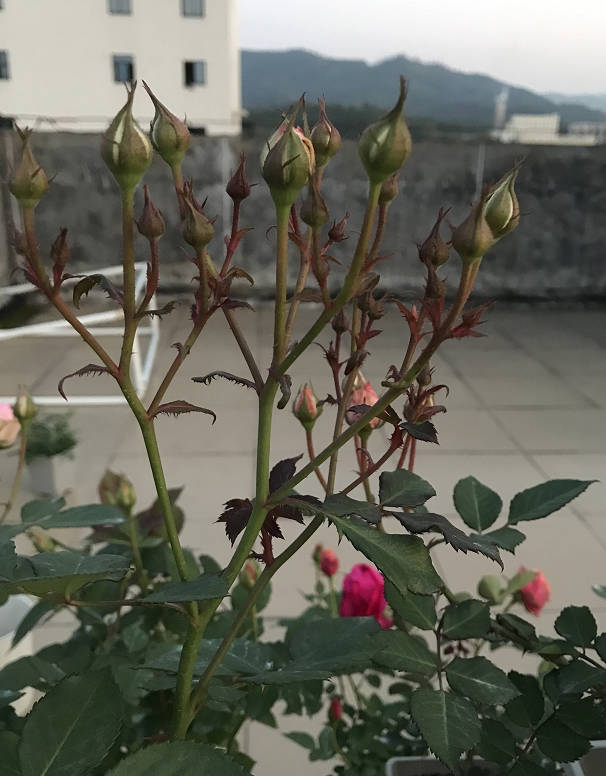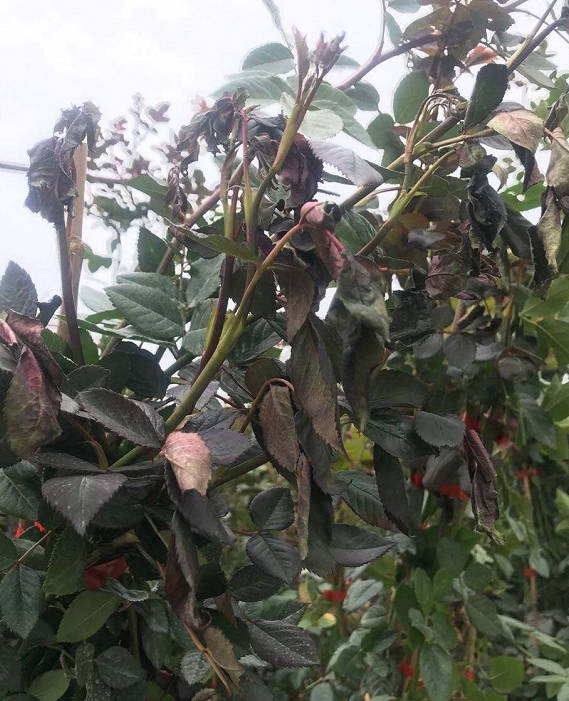How to Prevent Rose Bud Wilting in Early Spring
As the temperature rises, the new buds of roses grow rapidly, and when you look at those reddish new buds, it seems as if you have already foreseen the blooming of flowers in April and May. However, it can be very upsetting to find wilted buds. In early spring, many gardening enthusiasts often encounter wilting rose buds, confused, obviously they have not done anything wrong, why the new buds will wilt? What can be done to prevent this?

Common causes of wilted rose buds in early spring and how to deal with them
There are three common reasons for wilting new buds of roses in early spring, which you can refer to and prevent in advance.
1. Waterlogged roots

As shown in the picture below, the new buds of this rose have lost water and wilted, but the potting soil is very wet, and the surface is also the phenomenon of slaking. Look closely at the rose branches, you will find that the skin is wrinkled, these are serious signs of water shortage. However, with a moist potting soil, roses should not be dehydrated. The reason why they show symptoms of water shortage is actually a damaged root system that is unable to absorb water. This condition can usually be determined as root rot caused by waterlogged potting soil.
Treatment:
- Selection of potting soil: Potting soil for potted roses should have good air permeability and drainage. If the potting soil is too fine, too water retention, poor permeability, it will be prone to waterlogging problems. It is recommended to use loose and breathable formula soil with more particles.
- Watering principle: Adhere to the principle of “water well when dry, do not water when not dry”, avoid over-watering.
2. Early spring epidemics

Early spring, the temperature difference between day and night is large, if too much watering or rain, high humidity, roses will be easily infected with epidemics. When found, often the new buds have already appeared withering phenomenon.
Treatment:
- Prompt pruning: If individual new shoots are found to be wilted, they should be cut out and treated with a fungicide spray. Epidemic is a fungal disease, commonly used fungicides such as pyrimethanil and flusilazole can be effective treatment.
- Preventive measures: For rose seedlings with weak root systems or weak branches, the weak branches should be cut off thoroughly during winter pruning. In early spring, regular spraying of fungicides is recommended for prevention.
3. Fertilization

Fertilizer damage is a common but easily overlooked cause of wilted new rose buds in early spring. Many gardening enthusiasts are confused as to why the new shoots wilt when they have not been over-fertilized. For example, a gardening enthusiast recently inquired about the sudden wilting of his rose new shoots, and after careful questioning, discovered that the problem was with fertilization.
Case Study:
This gardening enthusiast had applied fermented sheep manure and bone meal to his roses during the winter and sprayed them with rock sulfur compound. However, it wasn’t until he provided the photos shown below that the cause was actually found.

It is obvious from the photo that the scorched tips of new leaves, dry leaf edges, and deformed new leaves, combined with the lack of recent pesticide use, led to the determination of fertilizer damage. Upon further questioning, it was discovered that this gardening enthusiast had also applied OGL slow-release fertilizer in a pot that was only 1 gallon in size. Due to the rapid rise in temperature, the release of fertilizer from the slow-release fertilizer was accelerated, resulting in fertilizer damage to the roses.
Treatment:
Control the amount of fertilizer applied: When using chemical fertilizers, always refer to the instructions for the amount to be used to avoid over-fertilizing.
Remedy: If fertilizer damage is found, dig out the fertilizer immediately and irrigate the roots with water. If the slow-release fertilizer has been mixed with the soil, it is recommended to replace the soil to avoid the continuous release of fertilizer effect leading to more serious seedling burning.
Fertilizer considerations for in-ground roses:
- Apply fertilizers evenly: When spreading compound fertilizers or slow-release fertilizers, they should be spread evenly to avoid accumulation of fertilizers in a certain place, which will lead to excessive concentration of fertilizers locally and cause fertilizer damage.
- Avoid fertilizer contact with new shoots: If the fertilizer accidentally fell on the new shoots, should be removed in a timely manner to avoid causing local fertilizer damage.
- Watering: After applying fertilizer on sunny days, remember to water in time to help evenly distribute the fertilizer.





